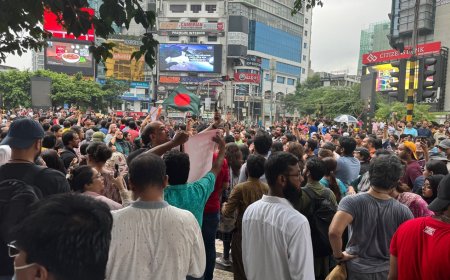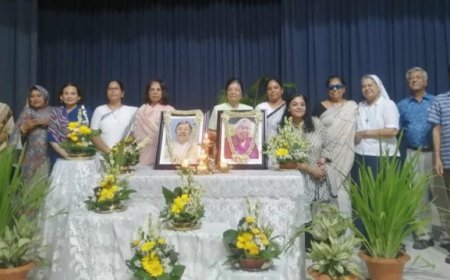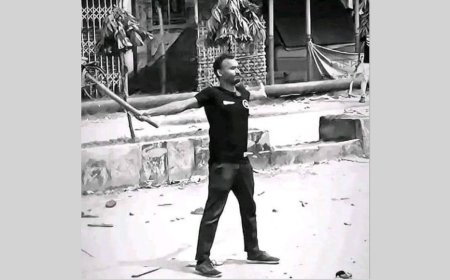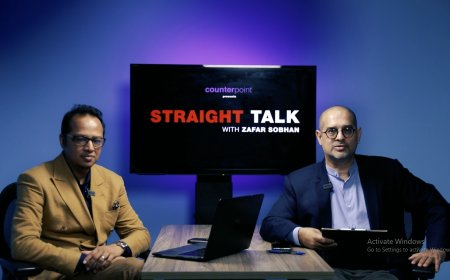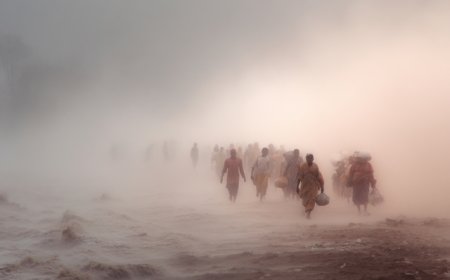The Panopticon Paradox
How CCTV is creating a new, more terrifying reality in Bangladesh

The Glaring Lens and the Falling Hammer
In the grainy digital footage, the CCTV camera watches, unblinking, as a night guard goes about his duties. Then, the narrative takes its horrifying turn -- the sudden violence, the brutal efficiency, the falling hammer. The camera records it all, a silent witness to the unraveling of our social fabric. This is not a scene from a dystopian film; this is the reality playing out across Bangladesh today, where the very tools we installed for protection have become accomplices in crafting a new landscape of fear.
We find ourselves trapped in a modern paradox: In our quest for security through surveillance, we have instead constructed a hyper-real prison where violence is not deterred but performed, not documented but amplified, not solved but sensationalized. The recent brutal killing of a night guard in Narayanganj, captured in chilling detail on camera, is not an isolated incident but part of an emerging pattern where crimes transform into cinematic productions for digital consumption. How has our society reached this point where the camera's eye witnesses not our safety, but our descent?
The Performance of Violence: When Crimes Become Cinema
The theoretical promise of surveillance was straightforward -- the Panopticon effect, where the mere possibility of being watched would modify behavior toward social conformity. Bangladesh has embraced this vision, installing cameras in public spaces, institutions, and private establishments. Yet somewhere between theory and reality, something went terribly wrong.
The camera has not deterred the criminal act; it has transformed its nature. Where violence was once hidden, it now often unfolds with theatrical brazenness. The assailants in the Narayanganj case displayed an alarming indifference to the surveillance apparatus, their actions suggesting not fear of consequence but perhaps an understanding of its new role in the digital age.
This phenomenon transcends borders, reflecting a global dark trend. In Uttar Pradesh, India, security guards not only allegedly raped a woman but recorded the assault, then weaponized the video by making it viral on social platforms. The violence here was not merely committed but staged, with the perpetrators consciously crafting content designed for digital dissemination. The camera in such instances ceases to be a deterrent and becomes instead a co-conspirator in the performance of power.
The Digital Amplification Machine: Our Trauma, Their Algorithm
Into this volatile landscape steps the unstoppable force of Western digital platforms -- Facebook, YouTube, TikTok -- architected in Silicon Valley but reshaping public discourse in Dhaka. These platforms operate on a simple, brutal logic: engagement is king. Their algorithms, optimized for profit rather than social stability, instinctively promote content that triggers strong emotional responses.
The mathematics of virality favors outrage, and nothing generates outrage like raw, visceral violence. The suffering of Bangladeshi citizens becomes reduced to data points in a global attention economy, where our collective trauma fuels advertising revenue streams that flow overseas. These platforms, over which we have minimal regulatory control, have effectively hijacked our public square and transformed it into a theater of horror. The consequences are multifaceted and damaging: violent videos are stripped of nuance and shared with inflammatory captions, often inflaming communal or political tensions ; repeated exposure to brutality desensitizes viewers, creating a society where extreme violence becomes perceived as commonplace; and victims suffer the initial crime, then relive it endlessly as the video circulates, denying them psychological closure. This curated stream of violent content creates what communication theorists call "Mean World Syndrome"—where heavy consumers of media violence perceive the world as significantly more dangerous than it actually is.
The Psychological Aftermath: Living in the Hyper-Real
French philosopher Jean Baudrillard's concept of hyperreality -- where representations become more real than reality itself -- has found its ultimate expression in modern Bangladesh. We are constructing a society where the digital representation of an event often holds more power and significance than the event itself. A crime's existence in public consciousness now depends on its recording. Events unrecorded struggle to register in the national discourse. Society splinters between those who have been traumatized by the latest viral horror and those who haven't, making unified public response increasingly difficult. Each viral crime video that fails to result in swift, transparent justice reinforces the narrative of institutional impotence, further eroding the social contract.
The psychological toll extends beyond immediate victims to society at large. Research on sexual violence survivors shows that negative social reactions to disclosure can create "secondary victimization" and silence victims. In our digital age, this secondary victimization occurs at societal scale, as public reaction to viral violence often blames victims, questions veracity, or minimizes suffering -- a digital reenactment of the same harmful dynamics that have long troubled individual survivors.
Breaking the Cycle: Reclaiming Control from the Lens
Escaping this paradox requires recognizing that technology itself is not the solution nor the problem -- it is our relationship with it that must change. The camera is merely a tool; its moral valence depends entirely on how we integrate it into our justice systems and social fabric.
For the state, we must move beyond surveillance as mere documentation toward surveillance as intervention. CCTV networks must be integrated with real-time response capabilities, ensuring that watching translates into protecting. Most importantly, the most powerful counter-narrative to a viral crime video is a viral video of swift, transparent, and credible justice. When the public sees perpetrators apprehended and processed through fair legal systems, faith in institutions is restored.
For media organizations, the ethical challenge is profound. The duty to report conflicts with the responsibility not to traumatize. Media must lead with a new ethic -- report the crime, not the trauma. This means describing events without becoming vehicles for their most graphic representations. The pursuit of clicks must not override the commitment to public wellbeing.
For citizens, we must become conscious consumers rather than unwitting amplifiers. Before sharing violent content, we should ask: Does this serve public awareness or public trauma? Am I informing or horrifying? We must cultivate what might be called "digital dhairya" -- the patience and wisdom to resist the addictive pull of outrage algorithms.
The Choice Before Us
We stand at a crossroads in our relationship with technology, violence, and each other. The Panopticon paradox reveals the fundamental truth that no camera can compensate for failed institutions, no lens can replace a functioning social contract.
The solution lies not in more surveillance, but in rebuilding the connective tissue of society -- trust, justice, and community. We must master the technology that currently masters us, harnessing it for genuine accountability rather than theatrical security. The Narayanganj guard's tragic fate should serve as our turning point -- the moment we decided to stop watching the horror and start changing the channel.
The camera will keep watching. The question is: will we remain passive viewers, or will we become active authors of a better story?
Zakir Kibria is a Bangladeshi writer, policy analyst and entrepreneur based in Kathmandu, Nepal. He can be reached at zk@krishikaaj.com.
What's Your Reaction?




































